New International Commentary: The First Epistle of Peter
PRODUCT HIGHLIGHTS:
- Verse-by-verse commentary
- In-depth discussion of textual and critical matters
- Introductions to each book’s authorship, date, purpose, structure, and theology
- Detailed bibliography
DESCRIPTION
The First Epistle of Peter constitutes an important work of New Testament theology and pastoral care, serves as an example of how the early church applied Jesus’ sayings and the Old Testament writings to contemporary concerns, and presents some extremely useful perspectives on living the Christian life today. This commentary by Peter Davids does an excellent job of mining the rich wealth of instruction to be found in this very significant section of Scripture.
Davids’s commentary contains several notable features: a unique grasp of 1 Peter’s structure, a systematically arranged introduction that summarizes the commentary proper, a perceptive excursus on suffering in 1 Peter and the New Testament, Davids’s own study translation, thorough and incisive comments on each verse of the text, frequent parallels to ancient literature, an exceptionally clear and lively writing style, and one of the most comprehensive bibliographies on 1 Peter available anywhere.
….
New International Commentary: The Epistles of John
PRODUCT HIGHLIGHTS:
- Verse-by-verse commentary
- In-depth discussion of textual and critical matters
- Introductions to each book’s authorship, date, purpose, structure, and theology
- Detailed bibliography
DESCRIPTION
The three Epistles of John, according to I. Howard Marshall, are concerned with the fundamentals of Christian belief and life—faith and love. The reader who grasps the message of these short but essential letters will have a sound basis in Christian doctrine. This group of Epistles, says Marshall, is also a good starting point for the study of the Gospel of John. This important commentary, then, was written not only so that students of the Bible might master the content of John’s Epistles, but that they might come to a proper understanding of Johannine theology as a whole.
This volume includes an “invitation” to general readers and an “introduction” addressed to students and specialists. Another fresh feature is a rearrangement of the traditional order of the three letters: 2 John and 3 John are studied before 1 John. This structure assures that the two shorter letters are not relegated to the position of appendices but are treated as important documents of early Christianity in their own right.
See excerpt of NIC Epistles of John
….
New International Commentary: The First and Second Epistles to the Thessalonians
PRODUCT HIGHLIGHTS:
- Verse-by-verse commentary
- In-depth discussion of textual and critical matters
- Introductions to each book’s authorship, date, purpose, structure, and theology
- Detailed bibliography
DESCRIPTION
In this commentary Gordon Fee aims first and foremost to offer a fresh exposition of the text of 1 and 2 Thessalonians. He shows the reader what is in the biblical text, what the text meant in the first century, and what it means now. Fee reveals the logic of each argument or narrative before moving on to the details of each verse, and he concludes each section with a theological-practical reflection on the meaning of the text today. Among other things, Fee explores the occasion for writing for each epistle, restoring 2 Thessalonians to the place it deserves as a full companion to the first letter, rather than merely a tagalong to 1 Thessalonians.
….
New International Commentary: Song of Songs
PRODUCT HIGHLIGHTS:
- Verse-by-verse commentary
- In-depth discussion of textual and critical matters
- Introductions to each book’s authorship, date, purpose, structure, and theology
- Detailed bibliography
DESCRIPTION
Relationships are a wonderful, mysterious, often elusive, sometimes painful part of the human experience. The most intimate of all human relationships, according to the Bible, is that between a husband and a wife. It is no surprise, therefore, that there is a book of the Bible, the Song of Songs, that focuses on this relationship. What is surprising is how little attention is given to the Song of Songs by scholars, by the church, and by readers of the Bible. With this volume Tremper Longman III unpacks for modern people what this ancient love poem says about the male-female relationship—and, by analogy, about God’s love for his people.
Longman’s superb study begins with a thorough introduction to the Song of Songs and its background. Longman discusses the book’s title, authorship, date, literary style, language, structure, cultural milieu, and theological content. He also canvasses the long history of interpretation of the Song of Songs, a history too often characterized by repression of the text. In the commentary itself, Longman structures the Song of Songs according to its twenty-three poetic units and explains its message verse by verse. The exposition is made clearer by Longman’s adoption of an anthropological approach to the text and by his frequent comparisons of the Song of Songs with other ancient Near Eastern literature.
Learned yet highly accessible, innovative yet fully informed by past scholarship, this commentary shows the beautiful Song of Songs to be a timeless celebration of human love and sexuality.
….
New International Commentary: The Book of Ecclesiastes
PRODUCT HIGHLIGHTS:
- Verse-by-verse commentary
- In-depth discussion of textual and critical matters
- Introductions to each book’s authorship, date, purpose, structure, and theology
- Detailed bibliography
DESCRIPTION
Ecclesiastes is one of the most fascinating—and hauntingly familiar—books of the Old Testament. The sentiments of the main speaker of the book, a person given the name Qohelet, sound incredibly modern. Expressing the uncertainty and anxieties of our own age, he is driven by the question, “Where can we find meaning in the world?”
But while Qohelet’s question resonates with readers today, his answer is shocking. “Meaningless,” says Qohelet, “everything is meaningless.” How does this pessimistic perspective fit into the rest of biblical revelation? In this commentary Tremper Longman III addresses this question by taking a canonical-Christocentric approach to the meaning of Ecclesiastes.
Longman first provides an extensive introduction to Ecclesiastes, exploring such background matters as authorship, language, genre, structure, literary style, and the book’s theological message. He argues that the author of Ecclesiastes is not Solomon, as has been traditionally thought, but a writer who adopts a Solomonic persona. In the verse-by-verse commentary that follows, Longman helps clarify the confusing, sometimes contradictory message of Ecclesiastes by showing that the book should be divided into three sections—a prologue (1:1–11), Qohelet’s autobiographical speech (1:12–12:7), and an epilogue (12:8–14)—and that the frame narrative provided by prologue and epilogue is the key to understanding the message of the book as a whole.
Recommendations:
On John Pipers recommended commentaries list.
….
New International Commentary: The Book of Ruth
PRODUCT HIGHLIGHTS:
- Verse-by-verse commentary
- In-depth discussion of textual and critical matters
- Introductions to each book’s authorship, date, purpose, structure, and theology
- Detailed bibliography
DESCRIPTION
The Book of Ruth contains one of the Bible’s best-known and most-loved stories. This major commentary by Robert L. Hubbard shows how the author of Ruth used, with great literary artistry, the story of Ruth and Naomi to convey important theological themes.
In his introduction, Hubbard discusses the issues of text, canonicity, literary criticism, authorship and date, purpose, setting, genre, legal background, and themes and theology, and concludes with an outline of the book and a thorough bibliography. The commentary proper is based on Hubbard’s own fresh translation and is accented by copious footnotes on textual, philological, and literary matters.
Gleaning the best from recent research on Ruth, Hubbard gives the story’s rich literary, grammatical, and theological dimensions a careful, rigorous treatment. He allows for the possibility that the anonymous author was a woman and argues that the narrative itself aims to counter opposition to the Davidic monarchy in Israel and Judah during Solomon’s reign. Throughout, Hubbard’s sensitivity to the literary genius of Ruth’s author and his coherent explication of the outworking of the book’s theological themes make this volume an invaluable tool for anyone desiring to explore the beautiful story of Ruth in depth.
….
New International Commentary: The Books of Ezra and Nehemiah
PRODUCT HIGHLIGHTS:
- Verse-by-verse commentary
- In-depth discussion of textual and critical matters
- Introductions to each book’s authorship, date, purpose, structure, and theology
- Detailed bibliography
DESCRIPTION
Providing clear exposition based on solid contemporary scholarship, this commentary by F. Charles Fensham examines the books of Ezra and Nehemiah—two books of Scripture that are especially important for understanding the last century of Old Testament Jewish history and for marking the beginnings of Judaism.
A biblical scholar well known for his expertise in ancient Near Eastern studies, especially Ugaritic, Fensham places Ezra and Nehemiah against the ancient Near Eastern environment. In his introduction Fensham discusses the original unity of the books as well as the problems of authorship. He then treats the historical and religious background of the books, taking special note of the development of a Jewish religious society in postexilic times. Text and language are examined next, followed by a thorough bibliography.
The commentary proper, based on Fensham’s own fresh translation of the biblical texts, is richly documented and displays cautious good judgment, willingness to consider different options, a sensible approach, and keen insight into the religious meaning of these key Hebrew texts.
….
New International Commentary: Paul’s Letter to the Philippians
PRODUCT HIGHLIGHTS:
- Verse-by-verse commentary
- In-depth discussion of textual and critical matters
- Introductions to each book’s authorship, date, purpose, structure, and theology
- Detailed bibliography
DESCRIPTION
This commentary by respected New Testament scholar Gordon D. Fee is a scholarly yet thoroughly readable study of Paul’s letter to the suffering community of believers in Philippi.
Working directly from the Greek text but basing his comments on the New International Version, Fee sets Paul’s letter to the Philippians squarely within the context of first-century “friendship” and “moral exhortation” to a church facing opposition because of its loyalty to Jesus Christ. At the same time Fee gives equal concern to the letter’s theological and spiritual relevance.
Important features of this commentary include a remarkable comparison of Philippians to two well-known types of letters in the Greco-Roman world: the letter of friendship and the letter of moral exhortation; an introduction that discusses the occasion, authenticity, and theological contributions of Philippians; and scholarly insights that resolve many of the formal and structural issues that have long puzzled New Testament scholars.
….
New International Commentary: The Epistles to the Colossians, to Philemon and to the Ephesians
PRODUCT HIGHLIGHTS:
- Verse-by-verse commentary
- In-depth discussion of textual and critical matters
- Introductions to each book’s authorship, date, purpose, structure, and theology
- Detailed bibliography
DESCRIPTION
This collection of three commentaries in one volume completes F. F. Bruce’s lifelong study of Paul’s writings. With the publication of this volume, Bruce—one of the most respected New Testament scholars in the world—finished writing commentaries on all the Pauline epistles except the Pastorals.
According to Bruce, there are important reasons for linking Colossians, Philemon, and Ephesians together in one work. The study of both Ephesians and Colossians, says Bruce, confirms his belief that Ephesians continues the line of thought followed in Colossians—in particular because it draws out the implications of Christ’s cosmic role (set forth in Colossians) for the church, which is his body. At the same time Ephesians constitutes the crown of Paulinism, gathering up the main themes of the apostle’s teaching into a unified presentation sub specie aeternitatis. The letter to Philemon, too, has a close association to Colossians, and is appropriately included in this volume.
….
New International Commentary: The Book of the Acts
PRODUCT HIGHLIGHTS:
- Verse-by-verse commentary
- In-depth discussion of textual and critical matters
- Introductions to each book’s authorship, date, purpose, structure, and theology
- Detailed bibliography
DESCRIPTION
First published in 1954, F.F. Bruce’s volume on the Book of Acts in the NICNT series has stood for more than fifty years as a standard commentary on Acts. In keeping with the effort to be faithful to the description “new” in the series title, however, Bruce undertook a thorough revision of this commentary before his death in 1990.
Expanded and fully updated, this volume now reflects the best elements of recent notable contributions to the study of Luke-Acts as well as the author’s own deepened understanding gained from years of further reflection on the text. Whereas the first edition used the text of the American Standard Version of 1901, this revision is based on Bruce’s own fresh translation of the Greek text. The result is a work that makes transparent the walls between the first and the twentieth centuries and enables readers to hear not only the voice of Luke but the Word of God.
….
New International Commentary: The Book of Revelation
- Verse-by-verse commentary
- In-depth discussion of textual and critical matters
- Introductions to each book’s authorship, date, purpose, structure, and theology
- Detailed bibliography
DESCRIPTION
No New Testament book has caused as much confusion and been subjected to as many varied interpretations as Revelation. Today we continue to witness a surge of popular interest in Bible prophecy and questions concerning such matters as the “last days” and the second coming of Christ. Scholarly debates continue as well, especially regarding the occurrence, timing, and theological significance of the “tribulation” and the “millennium.” It is therefore the special task of the commentator on Revelation to address such difficult questions in a scholarly and responsible manner while also remaining accessible to pastors, students, and general readers.
When first published, this volume on Revelation by Robert H. Mounce was widely praised as a standard commentary on the Apocalypse. In this new edition, now based on the NIV and Nestle-Aland, Mounce has revised and expanded his work to reflect more than twenty additional years of mature thought on Revelation and to bring his work up to date with the latest scholarship. As in the original edition, Mounce here engages seriously with the various approaches to interpretation and with the conventions common to apocalyptic literature. In affirming more directly his own reading of the Apocalypse, Mounce steers a middle course between an extreme literalism and a highly imaginative subjectivism, believing this to be the way the ancient text spoke to the first-century churches to whom it was addressed—and the way it still speaks to us today.
New International Commentary: The Epistle of James
PRODUCT HIGHLIGHTS:
- Verse-by-verse commentary
- In-depth discussion of textual and critical matters
- Introductions to each book’s authorship, date, purpose, structure, and theology
- Detailed bibliography
DESCRIPTION
The author of the Epistle of James, a letter distinguished for its passionate commitment to Jewish Christianity, has been dubbed “the Amos of the new covenant.” As a guide to Christian behavior, the letter deals with themes of universal importance, among which are the nature of God and man, the evils of lust and pride, the virtues of faith and hope, and the fruits of faith and love.
James B. Adamson, in contrast to many scholars, is convinced that James was a master writer whose knowledge and choice of Greek bestow on his epistle a sustained unity of style and content that bears a close affinity with the Synoptic Gospels and the sayings of Jesus. The substance and authoritative tone of this epistle follow in the tradition of Elijah and Moses, and the style and diction resemble some of the outstanding qualities of the Psalms the prophets.
In this thorough exegesis of his own working translation, Adamson combats some prevalent notions and corrects misunderstandings of the nature of this unique epistle, which, he says, cannot really be understood apart from the whole context of the New Testament.
….
New International Commentary: The Book of Leviticus
PRODUCT HIGHLIGHTS:
- Verse-by-verse commentary
- In-depth discussion of textual and critical matters
- Introductions to each book’s authorship, date, purpose, structure, and theology
- Detailed bibliography
DESCRIPTION
Leviticus used to be the first book that Jewish children studied in the synagogue. In the modern church it tends to be the last part of the Bible that anyone looks at seriously. Because Leviticus is largely concerned with subjects that seem incomprehensible and irrelevant today—rituals for sacrifice and regulations concerning uncleanness—it appears to have nothing to say to twenty-first-century Christians.
In this excellent commentary on Leviticus, Gordon Wenham takes with equal seriousness both the plain original meaning of the text and its abiding theological value. To aid in reconstructing the original meaning of the text, Wenham draws from studies of Old Testament ritual and sacrifice that compare and contrast biblical customs with the practices of other Near Eastern cultures. He also closely examines the work of social anthropologists and expertly utilizes the methods of literary criticism to bring out the biblical author’s special interests.
In pursuit of his second aim, to illumine the enduring theological value of Leviticus, Wenham discusses at the end of each section how the Old Testament passages relate to the New Testament and to contemporary Christianity. In doing so, he not only shows how pervasive Levitical ideas are in the New Testament but also highlights in very practical ways the enduring claim of God’s call to holiness on the lives of Christians today.
….
New International Commentary: The Book of Deuteronomy
PRODUCT HIGHLIGHTS:
- Verse-by-verse commentary
- In-depth discussion of textual and critical matters
- Introductions to each book’s authorship, date, purpose, structure, and theology
- Detailed bibliography
DESCRIPTION
Deuteronomy is a book about Israel’s preparation for a new life. Hardship and the wilderness lie behind; the conquest of the promised land lies ahead. What remains at this crucial stage in Israel’s history—the end of the Mosaic Age—is a call for a new commitment to God and a fresh understanding of the nature of the community of God’s people.
Interpreting Deuteronomy from a conservative perspective, Peter C. Craigie highlights the centrality of the book’s theme of covenant commitment while also taking great care to demonstrate how Deuteronomy is a book with considerable contemporary relevance. He uses resources of recent research in Old Testament studies to effectively bridge the gap of more than three thousand years that separates the modern reader from the events described in Deuteronomy, thus clarifying the primary message of the text for the modern reader. In its simplest phrasing that message is “Commit yourself to God wholeheartedly.” Deuteronomy, according to Craigie, provides a paradigm for the kingdom of God in the modern world.
….
New International Commentary: The Book of Joshua
PRODUCT HIGHLIGHTS:
- Verse-by-verse commentary
- In-depth discussion of textual and critical matters
- Introductions to each book’s authorship, date, purpose, structure, and theology
- Detailed bibliography
DESCRIPTION
Recognizing that Old Testament studies today are in a state of flux as never before and that the Book of Joshua seems to be at the crossroads of this animated discussion. Marten Woudstra here takes into careful account the various views represented by recent scholarship as well as Hebrew usage and text-critical concerns.
Woudstra demonstrates that the central theme in Joshua, to which everything in the book has been made subordinate, is the fulfillment of God’s promise to the patriarchs regarding the promised land. To support his understanding of this central theme, Woudstra emphasizes the nature of the Hebrew narrative as both proleptic, offering provisional summaries of events to be taken up later in considerable detail, and programmatic, indicating that the book was written close to actual events. The excellent introduction and section-by-section commentary are supplemented by an extensive bibliography and seven instructive maps.
….
New International Commentary: The Books of Nahum, Habakkuk and Zephaniah
PRODUCT HIGHLIGHTS:
- Verse-by-verse commentary
- In-depth discussion of textual and critical matters
- Introductions to each book’s authorship, date, purpose, structure, and theology
- Detailed bibliography
DESCRIPTION
The close-knit bond between prophecy and history, according to O. Palmer Robertson, becomes particularly clear through the study of Nahum, Habakkuk, and Zephaniah. As the historical context of their messages is explored, it becomes ever more apparent that biblical history—in addition to providing the context for prophecy—actually embodies and functions as prophecy. The events that occurred to Judah and its neighbors spoke in anticipation of world-shaking circumstances that were yet to come.
In this commentary Robertson combines the insights of biblical theology with a keen awareness of the age in which we live. After first dealing with the relevant background issues of Nahum, Habakkuk, and Zephaniah—redemptive-historical setting, theological perspective, date and authorship, and so on—Robertson applies the care and precision of an exegete and the concern of a pastor to his verse-by-verse exposition of each book. The result is a relevant confrontation with the ancient call to repentance and faith—a confrontation greatly needed in today’s world.
….
New International Commentary: The Books of Haggai and Malachi
PRODUCT HIGHLIGHTS:
- Verse-by-verse commentary
- In-depth discussion of textual and critical matters
- Introductions to each book’s authorship, date, purpose, structure, and theology
- Detailed bibliography
DESCRIPTION
This commentary by Pieter A. Verhoef offers a thorough exegesis and exposition of Haggai and Malachi—two important books of Scripture that, unfortunately, are not only little studied but have sometimes been maligned by contemporary scholarship—and stresses the relevance of these prophets’ messages in terms of continuity and discontinuity for the Christian church.
Verhoef’s introduction to each book elucidates the questions of authorship, style, text, structure, historical background, and message. Making extensive use of structural analysis, Verhoef argues convincingly for the authenticity, unity, and integrity of both books.
Verhoef also brings his knowledge of the ancient Near East, the Old Testament, and past and current biblical scholarship to bear in the commentary proper, and he displays theological acumen and pastoral sensitivity in tailoring his exposition for the student and pastor as well as for the scholar.
….

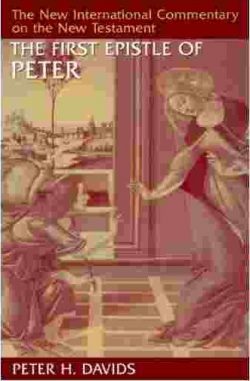
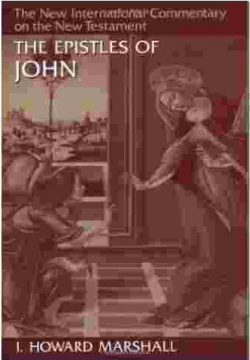
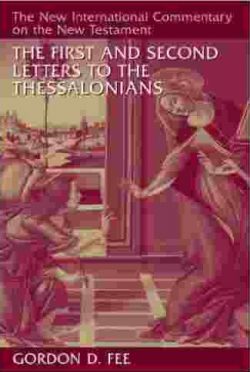
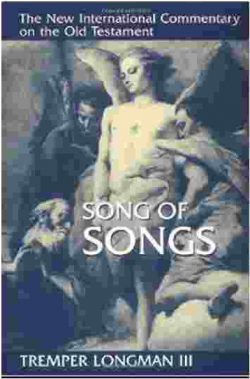
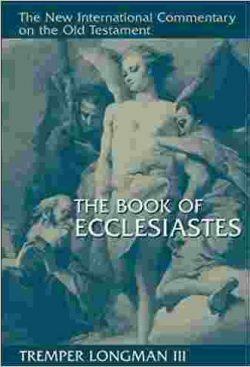
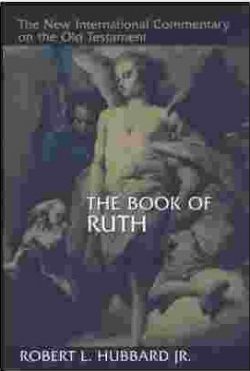
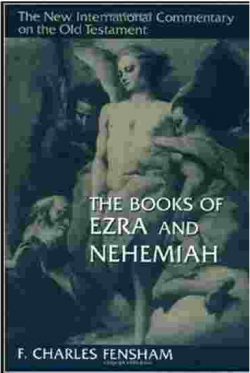

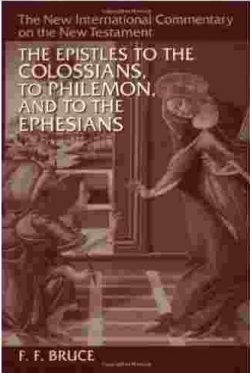
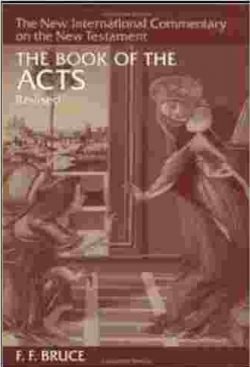
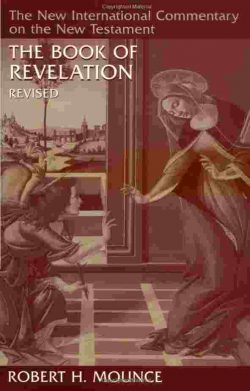
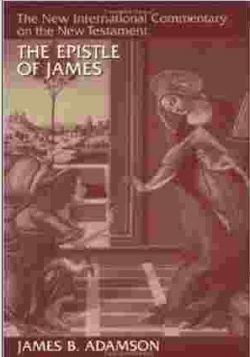
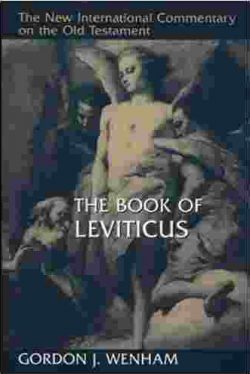
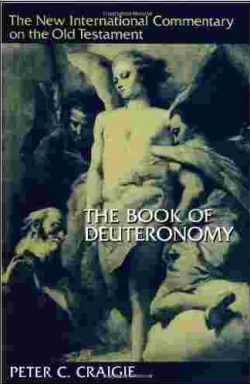
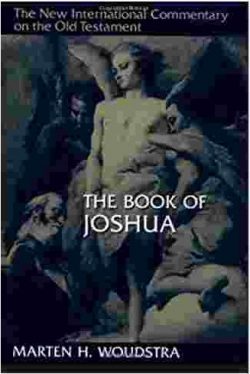
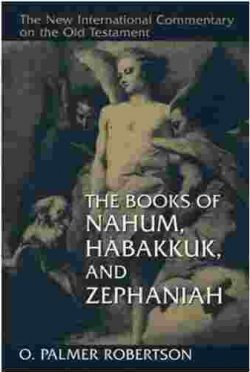
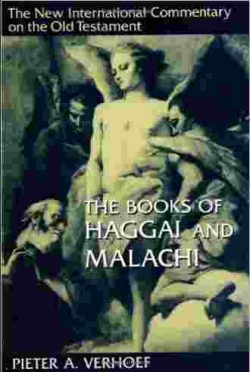
New International Commentary: The Epistle to the Galatians
PRODUCT HIGHLIGHTS:
DESCRIPTION
This commentary by Ronald Y.K. Fung has been added to the NICNT series to address significant new questions regarding the study of Galatians that have arisen since the publication of Herman N. Ridderbos’s commentary—the original NICNT volume on Galatians—in 1953.
Begun under the mentorship of F.F. Bruce at the University of Manchester, England, Fung’s work on Galatians offers solid, reliable exposition of the text while also providing a fresh assessment of the large number of interpretive questions—past and present—raised by Paul’s letter. This work also examines Galatians specifically as Paul’s most direct defense and exposition of justification by faith, which Fung says is the central motif of Paul’s understanding of the Gospel.
….